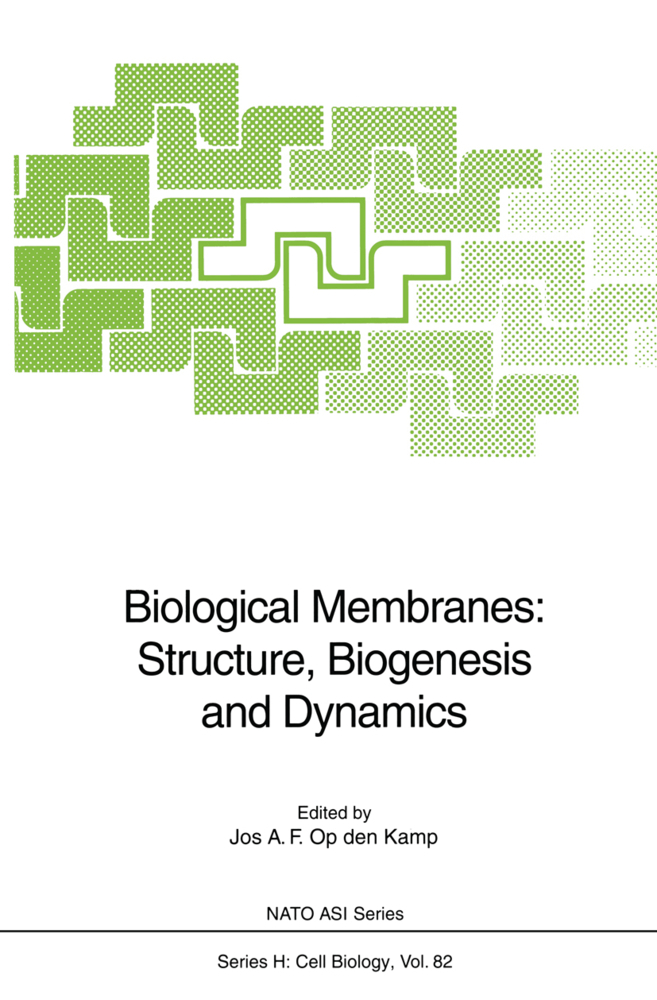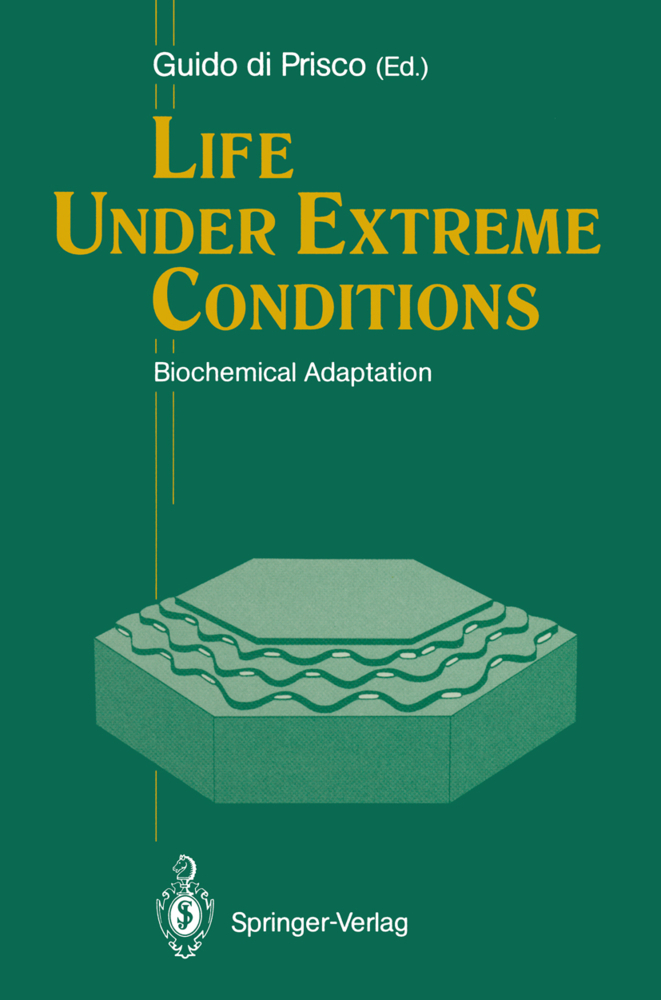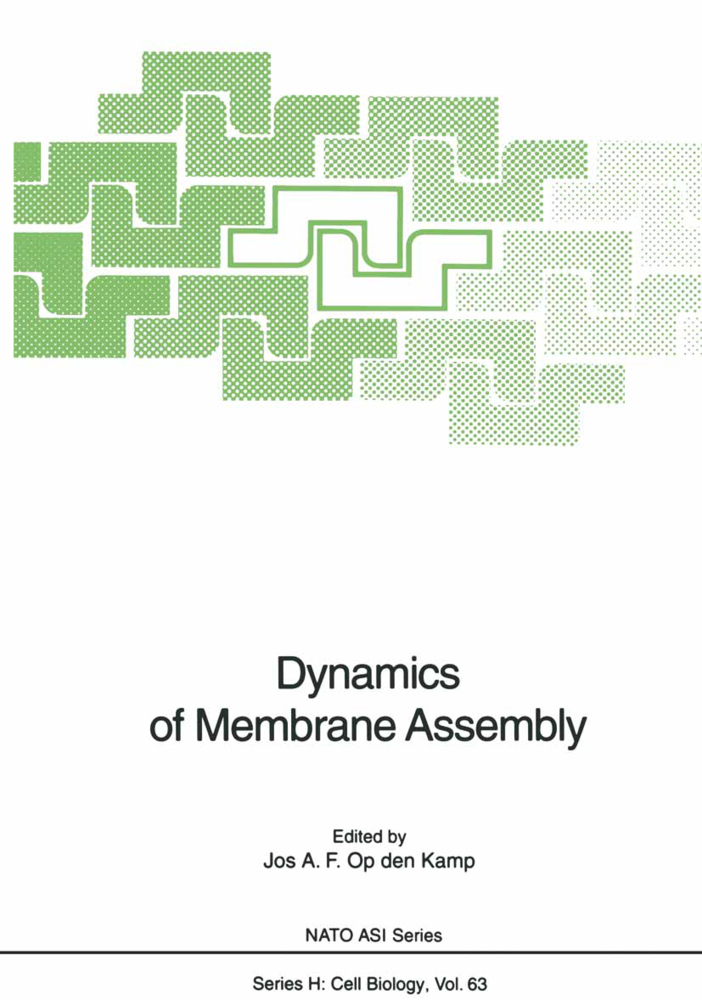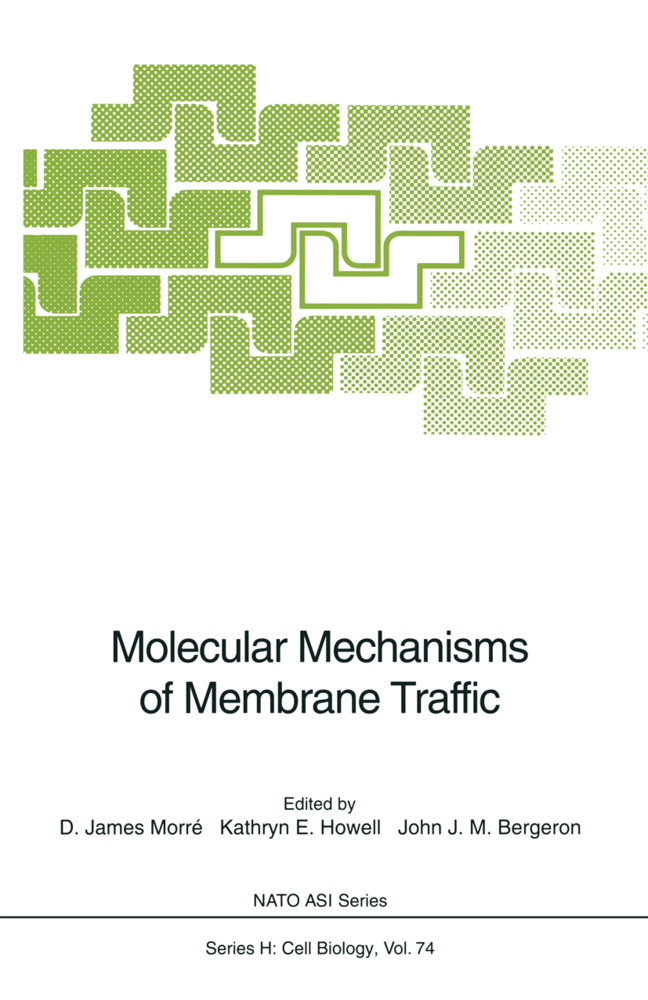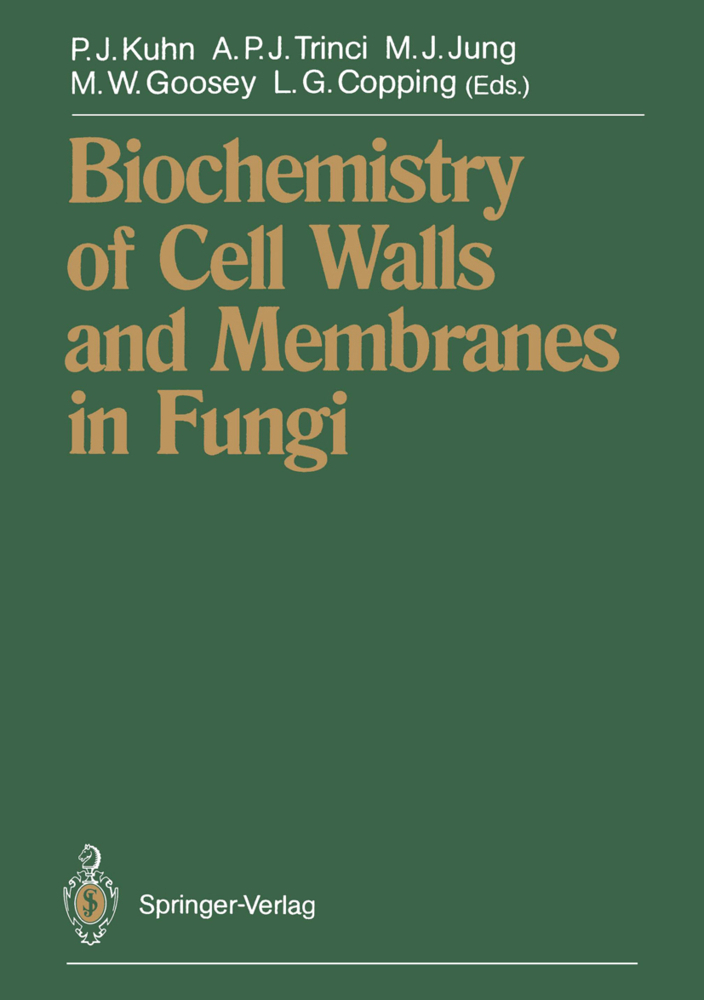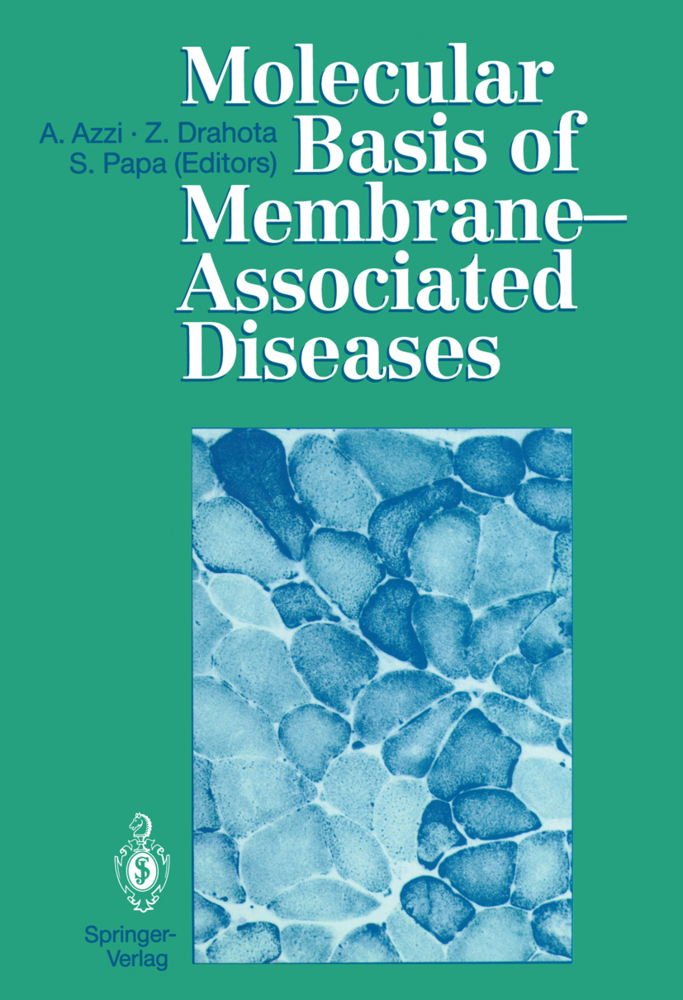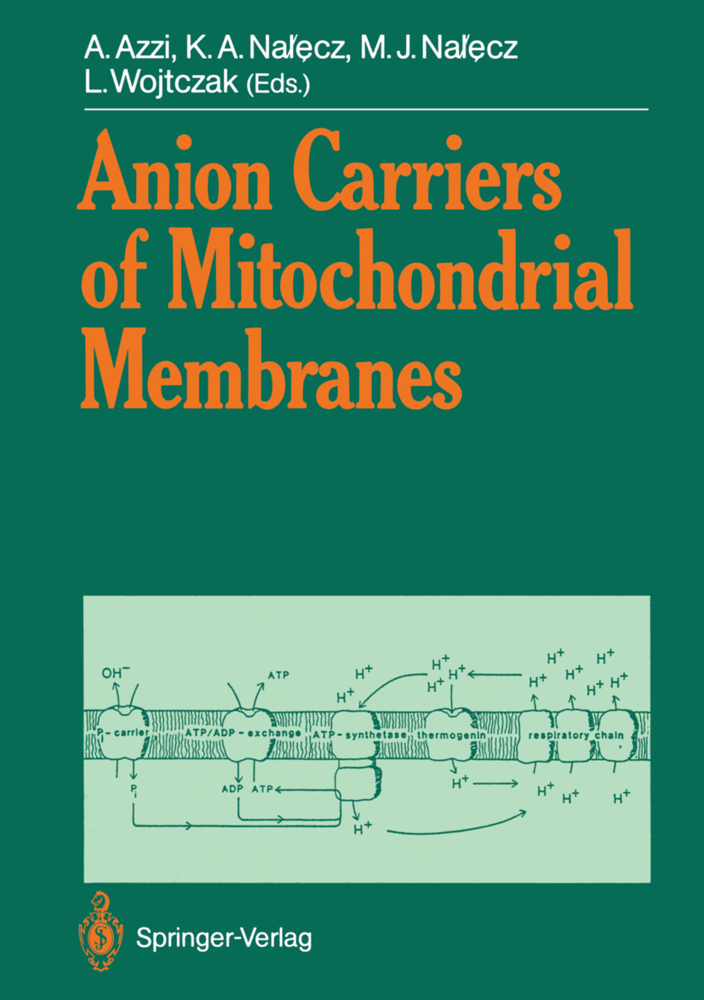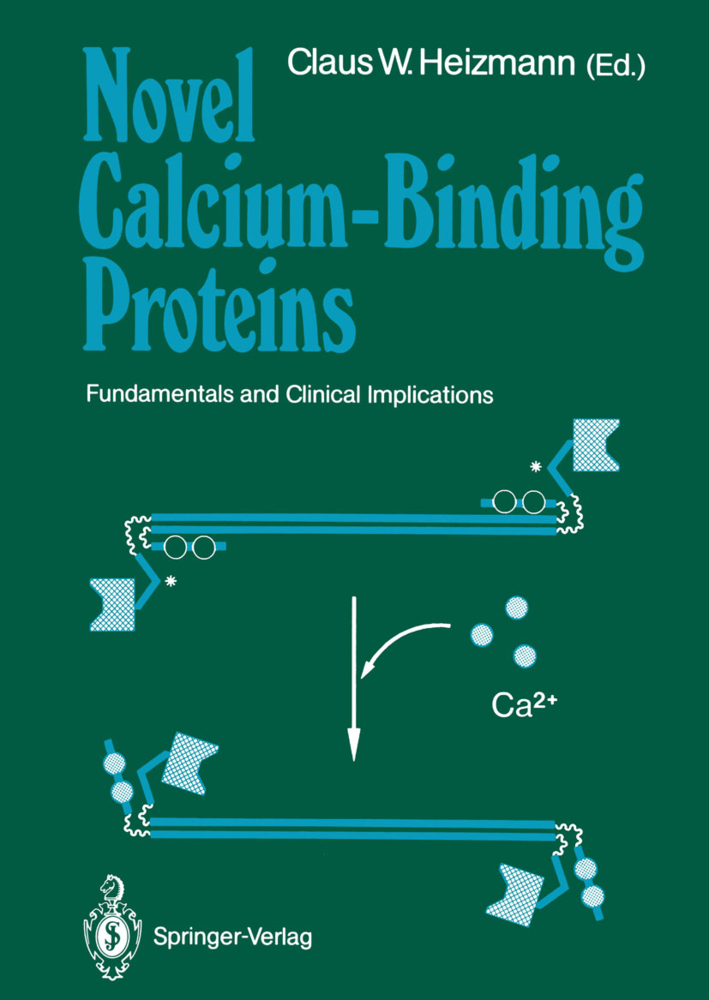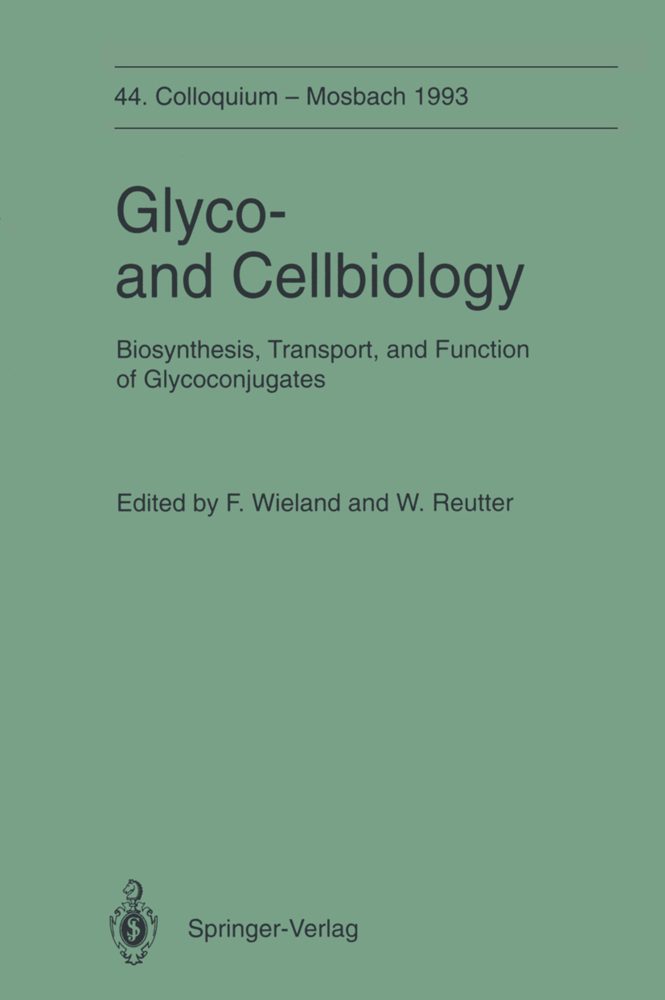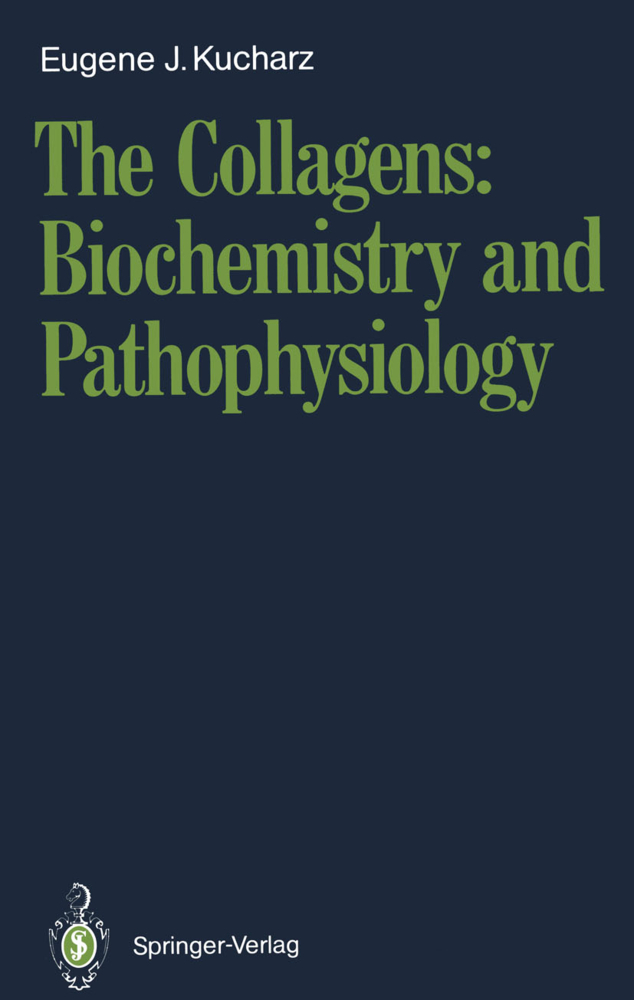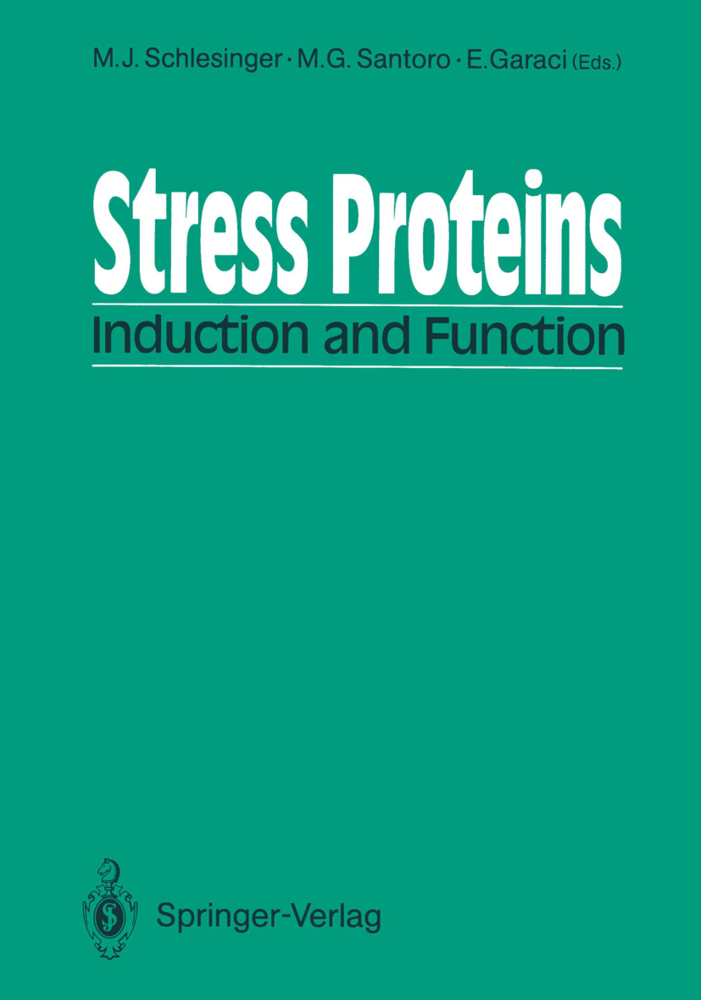Biological Membranes: Structure, Biogenesis and Dynamics
Biological Membranes: Structure, Biogenesis and Dynamics
The Advanced Study Institute on "Structure, Biogenesis and Dynamics of Biological Membranes, held in Cargese from June 14-26, 1993, has been dealing with four major topics in membrane biochemistry today: lipid dynamics and lipid-protein interactions, protein translocation and insertion, intracellular traffic aud protein structure and folding. The lecturers discussed these topics starting from several disciplines, including biochemistry, cell biology, genetics, and biophysics. This wayan interdisciplinary and very inte~sting view on biological membrane systems was obtained. At first an extensive overview of -mainly biophysical -techniques which can be used to study dynamic processes in membranes was presented. Sophisticated approaches such as ESR and NMR have been applied succesfully to unravel details of specific lipid-protein interactions. x ray analysis provides detailed structural information of several proteins and the possible implications for protein functions. Information obtained this way is complemented by studies on mechanisms and kinetics of protein folding. The latter information is indispensable when discussing protein translocation and insertion: proces:;es in which folding and unfolding play essential roles. Extensive insight was offered in the complicated machinery of phospholipid biosynthesis. In particular, the application of sophisticated genetic techniques has allowed a better understanding of the mechanisms regulating the synthetic machinery and detailed studies on a variety of mutants, lacking one or more of the essential enzymes, have resulted in the beginning of a bL!:
Localization of phospholipids in plasma membranes of mammalian cells
Some aspects of intracellular lipid traffic
Intracellular localization and mechanisms of regulation of phosphatidylinositol transfer protein in Swiss mouse 3T3 cells
Phosphatidylinositol transfer protein function in yeast
Conversion of the amphiphilic 115 kDa form of glycosyl-phosphatidylinositol-specific phospholipase D to an active, hydrophilic 47 kDa form
Magnetic resonance studies of protein-lipid interactions
Lipid-protein interactions with the hydrophobic SP-B and SP-C lung surfactant proteins in dipalmitoylphosphatidylcholine bilayers
Protein-membrane interactions in the complex biological milieu
Protein sorting and glycolipid-enriched detergent-insoluble complexes in epithelial cells
Structural and functional consequences of acylation of a transmembrane peptide
Non-crystallographic methods to study membrane proteins
Preferred local conformations of peptides comprising the entire sequence of bovine pancreatic trypsin inhibitor (BPTI) and their roles in protein folding
Co-translational modification, stability and turnover of eukaryotic proteins
Structure and mechanism of porins
The pore-forming toxin aerolysin: from the soluble to a transmembrane form
Signal sequences: roles and interactions by biophysical methods
Assembly of integral membrane proteins
How do proteins cross a membrane?
Protease secretion by Erwinia chrysanthemi and Serratia marcescens
ScFv antibody fragments produced in Saccharomyces cerevisiae accumulate in the endoplasmic reticulum and the vacuole
Preprotein binding by ATP-binding site mutants of the Bacillus subtilissecA
Internal disulfides in the diphteria toxin A-fragment block its translocation to the cytosol
Molecular characterization, assembly and membrane association of the GroEL-type chaperonins in Synechocystis PCC 6803
Identification and characterization of novel ATP-binding cassette proteins in Saccharomyces cerevisiae
Molecular interactions involved in the passage of the cytotoxic protein a-sarcin across membranes
Oligosaccharyl transferase and protein disulfide isomerase: two key enzymes in the endoplasmic reticulum
Division of the Golgi apparatus during mitosis in animal cells
Organelle inheritance in budding yeast
Fusion activity of influenza virus towards target membranes: pH requirements and effect of dehydrating agents
Structure and regulation of a gene cluster involved in capsule formation of Yersinia pestis
The toxin of the marine alga Prymnesium patelliferum increases cytosolic Ca2+ in synaptosomes and voltage sensitive Ca2+-currents in cultured pituitary cells
Semliki Forest virus induced cell-cell fusion and pore formation.
Role of phospholipids in cell function
Assembly of sphingolipids into membranes of the yeast, Saccharomyces cerevisiaeLocalization of phospholipids in plasma membranes of mammalian cells
Some aspects of intracellular lipid traffic
Intracellular localization and mechanisms of regulation of phosphatidylinositol transfer protein in Swiss mouse 3T3 cells
Phosphatidylinositol transfer protein function in yeast
Conversion of the amphiphilic 115 kDa form of glycosyl-phosphatidylinositol-specific phospholipase D to an active, hydrophilic 47 kDa form
Magnetic resonance studies of protein-lipid interactions
Lipid-protein interactions with the hydrophobic SP-B and SP-C lung surfactant proteins in dipalmitoylphosphatidylcholine bilayers
Protein-membrane interactions in the complex biological milieu
Protein sorting and glycolipid-enriched detergent-insoluble complexes in epithelial cells
Structural and functional consequences of acylation of a transmembrane peptide
Non-crystallographic methods to study membrane proteins
Preferred local conformations of peptides comprising the entire sequence of bovine pancreatic trypsin inhibitor (BPTI) and their roles in protein folding
Co-translational modification, stability and turnover of eukaryotic proteins
Structure and mechanism of porins
The pore-forming toxin aerolysin: from the soluble to a transmembrane form
Signal sequences: roles and interactions by biophysical methods
Assembly of integral membrane proteins
How do proteins cross a membrane?
Protease secretion by Erwinia chrysanthemi and Serratia marcescens
ScFv antibody fragments produced in Saccharomyces cerevisiae accumulate in the endoplasmic reticulum and the vacuole
Preprotein binding by ATP-binding site mutants of the Bacillus subtilissecA
Internal disulfides in the diphteria toxin A-fragment block its translocation to the cytosol
Molecular characterization, assembly and membrane association of the GroEL-type chaperonins in Synechocystis PCC 6803
Identification and characterization of novel ATP-binding cassette proteins in Saccharomyces cerevisiae
Molecular interactions involved in the passage of the cytotoxic protein a-sarcin across membranes
Oligosaccharyl transferase and protein disulfide isomerase: two key enzymes in the endoplasmic reticulum
Division of the Golgi apparatus during mitosis in animal cells
Organelle inheritance in budding yeast
Fusion activity of influenza virus towards target membranes: pH requirements and effect of dehydrating agents
Structure and regulation of a gene cluster involved in capsule formation of Yersinia pestis
The toxin of the marine alga Prymnesium patelliferum increases cytosolic Ca2+ in synaptosomes and voltage sensitive Ca2+-currents in cultured pituitary cells
Semliki Forest virus induced cell-cell fusion and pore formation.
Op den Kamp, Jos A.F.
| ISBN | 978-3-642-78848-2 |
|---|---|
| Artikelnummer | 9783642788482 |
| Medientyp | Buch |
| Copyrightjahr | 2011 |
| Verlag | Springer, Berlin |
| Umfang | X, 356 Seiten |
| Abbildungen | X, 356 p. |
| Sprache | Englisch |

